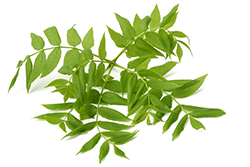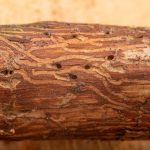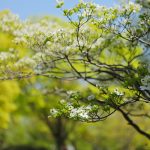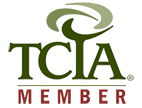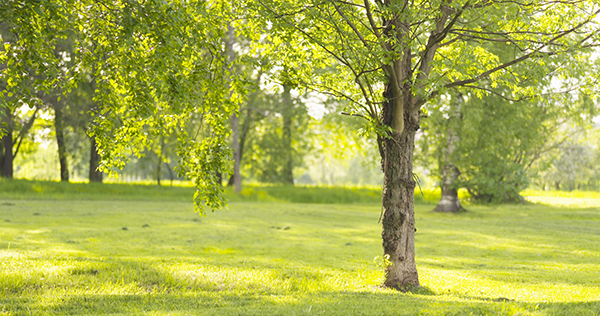
Ash trees in Illinois have a storied history, and a questionable future. Learn why in this article and how Hendricksen Tree Care can help service your ash trees.
This week, we continue our ongoing series of Chicago’s native trees by highlighting the ash tree. The ash tree has somewhat of a tragic tale in the Chicago area. This tall, flowering tree has long had a strong presence throughout Illinois, but the introduction of the emerald ash borer has decimated the ash tree population. The state of Illinois even had a quarantine on ash trees to restrict the movement of the trees and firewood cut from ash to help curb the emerald ash borer outbreak. This quarantine was started in 2007 but lifted in 2015 because officials determined that these efforts are not effective enough to limit the problem. Illinois still follows a federal quarantine on ash wood that makes it illegal for firewood from a quarantined state to be transported to an unquarantined state.
The problems caused by the emerald ash borer will be discussed in further detail below. For now, let’s separate the ash tree from this major problem to appreciate the beauty of the ash trees themselves. Ash trees are native to Canada and the northern United States and they are resilient to different environments and types of soil. Even though ash trees have been greatly affected by the emerald ash borer, several species of ash are still commonly found throughout the Chicago area. In this guide, we will cover the common characteristics of ash trees, the species of ash native to the Chicago area, ash tree care, and how to identify infestations of the emerald ash borer.
Our arborists at Hendricksen Tree Care are experts when it comes to treating pest problems with trees and we can help if your ash tree is affected by the emerald ash borer.
Characteristics of Ash Trees
Ash trees are medium sized trees that generally stand between 40 and 60 feet tall when matured, and it is not unusual for them to get as tall as 80 feet. They are in the same family as olive and lilac plants and consist of many different species under the genus Fraxinus. The majority of ash trees are deciduous and dioecious which means that the male and female flowers grow on separate plants. However, the gender of an ash tree is somewhat fluid as individual trees can change from male or hermaphrodite to female trees as they age.
The most defining characteristics of ash trees are the well-defined bark ridges, whorls of elongated green leaves with pointed ends, and their helicopter seeds. They are great for providing shade and can survive the cold conditions of the Chicago area in various types of soil. Most species of ash can live for well over 100 years if they receive the proper care and are protected from the emerald ash borer.
The main characteristics of ash trees are described in further detail below:
- Height: As mentioned above, ash trees can grow between 40 and 80 feet which makes them great shade trees. The maximum height differs between ash species as black ash trees grow to be 50 feet, blue ashes can grow to be 70 feet, green ashes get around 60 feet, and white ashes can grow up to 80 feet.
- Branches: The ash tree is one of 4 types of trees that have opposite branching. Opposite branching is when the branches of a tree grow off of the tree limb on opposite sides. So for each branch, there is a mate branch growing in the same spot on the opposite side of the limb. The only other trees that have this feature are dogwood, maple, and horse chestnut trees.
-
Leaves: Ash trees have elongated, oval-shaped leaves with pointed ends. They are also compound leaves which means that anywhere from 5 to 11 leaves may grow from a single bud. Ash tree leaves are green in the summer, and their fall colors differ depending on the species.
- Flowers: Ashes of both sexes are flowering trees and they are dioecious which means that male and female flowers do not grow on the same tree. The flowers of both sexes look similar, like purple and green clusters that grow in bunches. The difference between the male and female ash flowers is that males have stamens that produce pollen and female flowers have stigmas that catch pollen.
- Fruit: The fruit of an ash is one of its most defining characteristics. Known to many as helicopter seeds, the fruit is a seed called a samara that is contained within winged, papery tissue. This allows the wind to carry ash tree seeds for a significant distance. Only female ash trees produce these seeds.
- Bark: Ash tree bark starts out smooth when the tree is young and develops more deeply defined ridges as the tree matures. The bark is usually a grayish color and the distinct ridges typically form a diamond pattern.
Ash Trees Native to Illinois
There are between 45 and 65 known species of ash trees found in North America, Europe, and Asia. The following are some of the most common species of ash tree that are native to the Chicago region:
- Black ash: The black ash is hardy in cold environments and prefers wet, acidic soil. It is named for its darker colored bark and its leaves turn purple in the fall. Black ash trees generally grow to about 40 or 50 feet.
- Blue ash: Blue ash trees grow taller than black ashes, reaching up to 70 feet in height, and they prefer dryer soil. This makes them more tolerant to drought like conditions. The leaves of a blue ash turn yellow in the fall.
- Green ash: Green ash trees are very hardy as they can tolerate cold weather, wet or dry conditions, and soil of various pH levels. The leaves of a green ash tend to be yellow or yellowish green in the fall.
- White ash: The white ash is the biggest ash tree on this list as it can reach a height of 80 feet. These trees get their name from the whitish color on the underside of their leaves. White ashes prefer alkaline soil and have a low tolerance for droughts. In the fall, its leaves may turn purple, red, orange, or gold.
Threats to Chicagoland Ash Trees – Diseases and Pests
Though ash trees are hardy plants, they are vulnerable to a range of diseases and pests that can cause them major damage. One threat that has already been discussed deserves special attention because of the scale of damage it has caused to ash trees in the region: the emerald ash borer.
Emerald Ash Borer
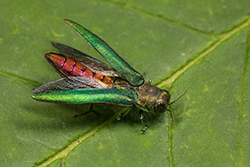
The Emerald Ash Borer is the single most destructive force of ash trees in Illinois, potentially having killed over 200 million trees already!
The emerald ash borer is an invasive beetle from northeast Asia that has caused significant damage to the native ash trees of North America. It is not known exactly how the emerald ash borer ended up in North America, but it was discovered in 2002 and has continued to spread throughout the continent ever since. The emerald ash borer has been found in 60 of Illinois’ 102 counties and may be responsible for the death of around 200 million ash trees in Illinois alone. They typically prefer to infest green and black ash trees, and they are also known to kill white and blue ashes if there are no black or green ashes in the area.
The emerald ash borer is so destructive in North America because the ash trees here are not as resistant as those in their native northeast Asia, and it has no natural North American predators. They infest ash trees by laying eggs in the bark and when the larvae hatch, they burrow through the bark and inside the tree. The larvae spend the next year feeding on the fibers inside the tree, forming zigzag tunnels that disrupt the flow of nutrients which starves the tree from the inside. Mature emerald ash borers then cut a D-shaped exit hole to leave the tree and restart the cycle.
The common signs of an emerald ash borer infestation include the D-shaped exit holes, thinning or dying crown, splitting or damaged bark, and tunnels etched into the wood underneath the bark. It is very important keep an eye out for these signs and call a tree service professional immediately to treat the infestation. If the damage becomes too extensive, your only option will be to remove the tree.
Additional Threats
While the emerald ash borer is by far the biggest threat to native ash trees, there are several other issues that can affect these trees:
-
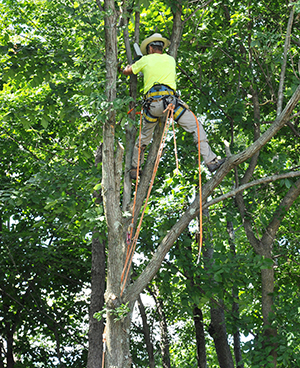
If your Chicagoland ash tree has been greatly affected by insects or disease it may be best to have the tree removed and replaced
Anthracnose: Anthracnose is a fungus that can affect any part of the tree including the foliage, roots, and twigs. The green ash is the most susceptible species to this disease. Anthracnose can be identified by dark colored spots that appear on the leaves, which can eventually kill off the foliage. This disease must be treated with a fungicide.
- Ash yellows: Ash yellows is a bacterial disease that affects white ash and green ash trees. There is not too much known about ash yellows because it is a recently discovered disease. It is believed to be transmitted by insects and it can result in branch dieback, yellowing of the leaves, cracks in the bark, and witches broom which is when there is an overgrowth of branches in one area of the tree. Ash yellows can kill an ash tree quickly or slowly over a period of several years.
- Clearwing borer: These borers are similar in appearance to wasps and attack many different tree types, including ash trees. Like the emerald ash borer, the clearwing borer lays its eggs on the bark and the larvae live inside the tree, feeding on the sapwood. This can result in gnarled bark and damage to the trunk and tissue which makes the tree more vulnerable to disease.
Ash Tree Care Tips
Ash trees are a great presence in yards and landscapes because of the shade and natural beauty they provide. Aside from protecting your trees against the emerald ash borer, ash trees are relatively easy to maintain. Make sure you follow these care tips if you have an ash tree on your property:
- Watering: The amount of water you should give an ash tree depends on its age, the time of year, and the conditions. Young ash trees need regular watering to help the root system develop and establish itself. Once an ash tree is matured, it does not need to be watered often. However, you should water ash trees once per week if there is a drought, and once late in the fall.
- Fertilization: Ash trees only need to be fertilized once per year in the fall. It is best to use a slow release granular fertilizer so it will supply the tree with nutrients into the winter. It is important to not let the fertilizer come into contact with the trunk because it could cause an infection.
- Mulch: Mulch should be laid around ash trees for the summer and winter seasons. In the summer, the mulch will help the soil retain moisture and improve its nutritional value. It is best to use organic mulch and spread it 4 inches deep around the base of the tree. Leave some space around the base of the tree for air circulation. In the winter, apply mulch immediately after the ground freezes to protect the shallow roots.
- Pruning: Ash trees only need pruning if you are trying to control its height or if the branches are dead, damaged, or diseased. Pruning a tall ash tree is a dangerous job and should be left to professionals.
- Winter: Even though ash trees are resilient to the cold, they can be affected by cold wind. Wrapping your tree with natural burlap can help retain moisture and protect the tree from wind damage during the winter. The burlap should be wrapped loosely around the trunk with enough space at the top and bottom of the wrap for air circulation.
Professional Tree Care Services for Your Illinois Ash Trees
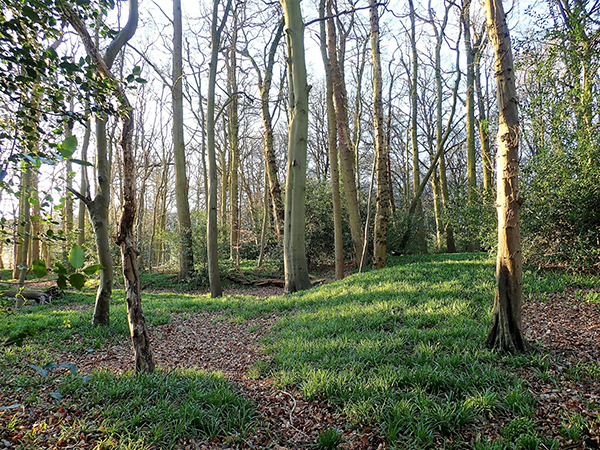
Ash Trees are native to Chicago and surrounding IL cities such as Arlington Heights, providing a beautiful backdrop to forests and landscapes, but are in serious danger due to foreign insects like the Emerald Ash Borer
Ash Trees are native to Chicago and surrounding IL cities such as Arlington Heights, providing a beautiful backdrop to forests and landscapes, but are in serious danger due to foreign insects like the Emerald Ash Borer
Healthy ash trees make beautiful shade trees and they can live for well over a century. They just need a little bit of care to get enough moisture and nutrients to survive the winter and periods of drought. However, your ash trees are always vulnerable to the emerald ash borer which has made its presence known throughout the Chicago area. If you believe your ash trees may be affected by disease or the dreaded emerald ash borer, contact Hendricksen Tree Care right away for our professional tree care services. Our arborists are experts at identifying the signs of an emerald ash borer situation and we will advise you on the best ways to deal with the issue.
At Hendricksen Tree Care, we are passionate about caring for your ash trees and other trees native to the Chicago region. Contact us for tree care services in Arlington Heights, Palatine, Mt. Prospect, Barrington, and the surrounding north and northwest Chicago suburbs.
Be sure to look for the next part of our series about native trees of Chicago.
